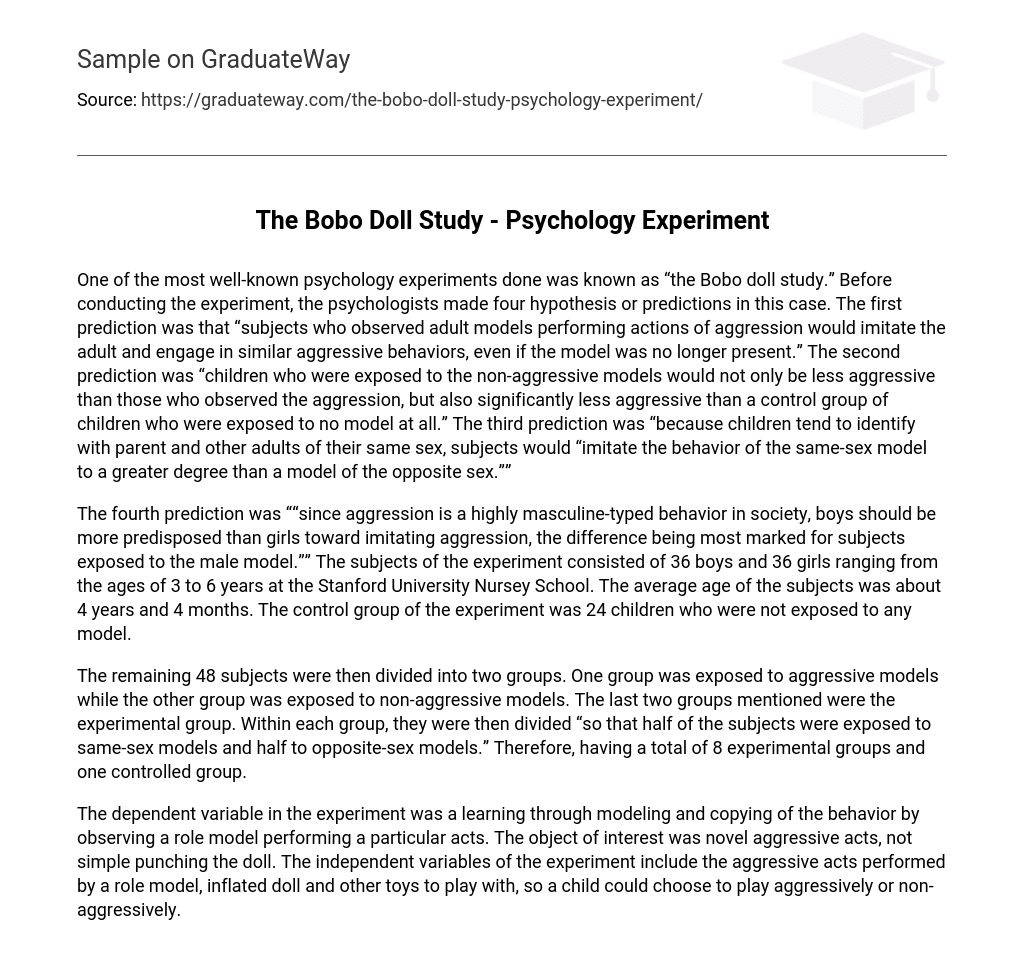One of the most well-known psychology experiments done was known as “the Bobo doll study.” Before conducting the experiment, the psychologists made four hypothesis or predictions in this case. The first prediction was that “subjects who observed adult models performing actions of aggression would imitate the adult and engage in similar aggressive behaviors, even if the model was no longer present.” The second prediction was “children who were exposed to the non-aggressive models would not only be less aggressive than those who observed the aggression, but also significantly less aggressive than a control group of children who were exposed to no model at all.” The third prediction was “because children tend to identify with parent and other adults of their same sex, subjects would “imitate the behavior of the same-sex model to a greater degree than a model of the opposite sex.””
The fourth prediction was ““since aggression is a highly masculine-typed behavior in society, boys should be more predisposed than girls toward imitating aggression, the difference being most marked for subjects exposed to the male model.”” The subjects of the experiment consisted of 36 boys and 36 girls ranging from the ages of 3 to 6 years at the Stanford University Nursey School. The average age of the subjects was about 4 years and 4 months. The control group of the experiment was 24 children who were not exposed to any model.
The remaining 48 subjects were then divided into two groups. One group was exposed to aggressive models while the other group was exposed to non-aggressive models. The last two groups mentioned were the experimental group. Within each group, they were then divided “so that half of the subjects were exposed to same-sex models and half to opposite-sex models.” Therefore, having a total of 8 experimental groups and one controlled group.
The dependent variable in the experiment was a learning through modeling and copying of the behavior by observing a role model performing a particular acts. The object of interest was novel aggressive acts, not simple punching the doll. The independent variables of the experiment include the aggressive acts performed by a role model, inflated doll and other toys to play with, so a child could choose to play aggressively or non-aggressively.





